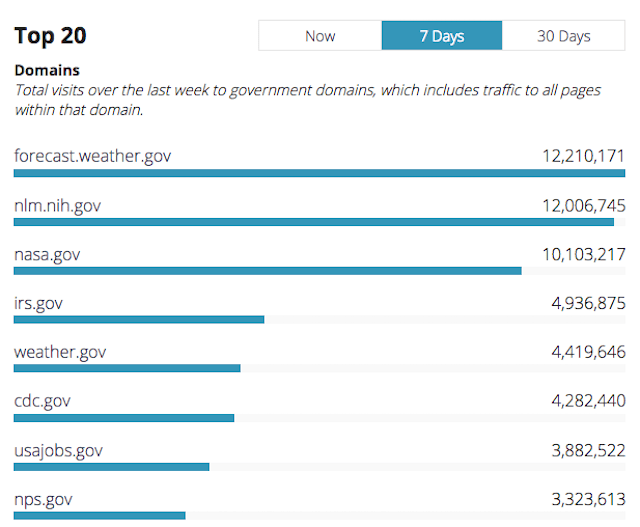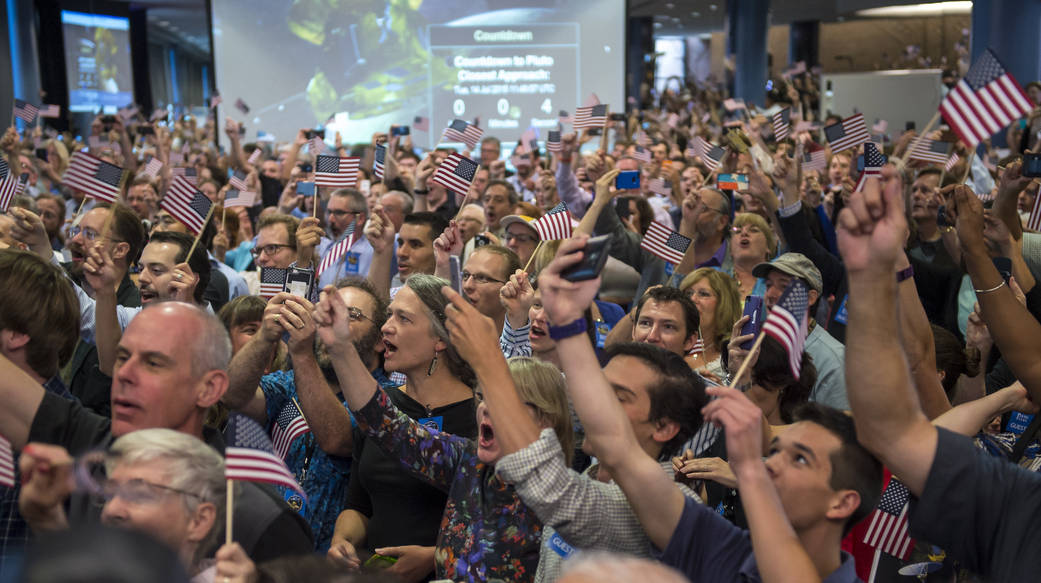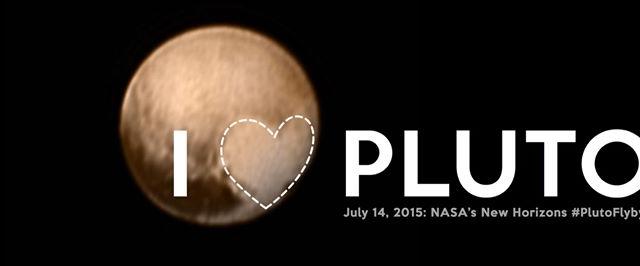This time last week, the internet wasn’t talking about cat videos or Kardashians. Instead, millions were discussing whether a piano-sized robot 4.8 billion kilometres from Earth would beam home a critical radio signal on schedule. That signal would tell us that the New Horizons spacecraft had successfully accomplished its Pluto flyby.
On July 14, 2015, NASA won the internet. #PlutoFlyby and #NewHorizons trended on Twitter. A fresh image of our solar system’s once-ninth planet garnered hundreds of thousands of Instagram likes within hours. A New Horizons AMA skyrocketed to the top of Reddit. And the space agency’s website became the third most popular government domain, second only to the National Weather Service and the National Institutes of Health.

Visits to government domains over the past seven days, accessed 7/21/15 at analytics.usa.gov
It was the biggest media week in NASA’s history, as millions of newly-minted space nerds watched Pluto transform from a fuzzy grey blob into a colourful world with ice mountains, patterned plains, and an atmosphere. I and my fellow science writers, accustomed to the geologic pace at which multi-year academic research projects become news, found ourselves constantly typing to keep up with the deluge of fascinating, real-time updates. (io9 have together published over fifty articles on Pluto since the beginning of the month.) And the outpouring of Pluto-love we’ve received in return has been astonishing.
Making Space Viral
Astronomy has long captivated the public’s imagination, and for good reason: It’s utterly awe-inspiring to see images of other worlds, nebulas and galaxies in our universe. The vastness of space puts our lives in a perspective that nothing else can, reminding us, as Carl Sagan would say, that everything we know and cherish exists on tiny blue dot in a vast cosmic ocean.
Still, the viral popularity of space events is a fairly new development, and it’s due in large part to NASA’s concerted social media outreach effort. This effort includes a dedicated social media staff that not only manages NASA’s flagship accounts, but hundreds of others — the Goddard Spaceflight Center, the Jet Propulsion Laboratory, NASA’s Earth Observatory — across Twitter, Facebook, Instagram, Google Plus, YouTube, Vine and half a dozen other platforms.
NASA’s social media presence also features hundreds of NASA scientists who are sharing their love for space with the world every single day. That includes astronauts like Scott Kelly, whose documentation of a #YearInSpace has earned him 248,000 Twitter followers.
Day 115. Monday went by like a flash of lightning. Good night from @space_station! #YearInSpace pic.twitter.com/KEZoxQbTG3
— Scott Kelly (@StationCDRKelly) July 20, 2015
But thousands of social media accounts alone don’t explain the space fandom NASA has built. The other secret ingredient is personality. As pointed out in an excellent essay on Quartz, many of NASA’s rovers and space probes — New Horizons included — speak to us in the first person, recounting their cosmic adventures like human explorers. And we love them all the more for it.
“It’s been 3 days since you’ve looked at me,” says Pluto. Can’t believe it’s been that long already. “Thanks for the memories.” #PlutoFlyby
— NASA New Horizons (@NASANewHorizons) July 17, 2015
Now 471,030 miles from Pluto & taking pictures to look for rings & moons. There’s a lot of black sky out here. #PlutoFlyby
— NASA New Horizons (@NASANewHorizons) July 15, 2015
I’m safely on the surface of Mars. GALE CRATER I AM IN YOU!!! #MSL
— Curiosity Rover (@MarsCuriosity) August 6, 2012
1st drive complete! This is how I roll: forward 3 meters, 90º turn, then back. Electric slide, anyone? [pic] http://t.co/bqydbjvs
— Curiosity Rover (@MarsCuriosity) August 22, 2012
NASA’s knack for humanising hostile, distant worlds and the scientific probes exploring them might might be biggest factor contributing to the Plutomania that’s gripped the Internet. Bright spots on Pluto’s surface became hearts and whales. #PlutoTime invited us to experience a day on Pluto from right here on Earth. Images like this one turned the accomplishment of a small band of scientists into a triumph for the United States and the world:

Other space agencies are discovering the power of personality, too. Remember how the internet freaked out when the European Space Agency’s Rosetta comet lander woke up after months of silence? The event itself may have been a stroke of luck, but the social media sensation that followed involved some brilliant viral marketing:
Hello Earth! Can you hear me? #WakeUpPhilae
— Philae Lander (@Philae2014) June 14, 2015
Incredible news! My lander Philae is awake! http://t.co/VtzAQHx4zT pic.twitter.com/SZqnsnNpUZ
— ESA Rosetta Mission (@ESA_Rosetta) June 14, 2015
Having incredible content to begin with is the basis for NASA’s (and other space agencies’) popularity. Not all of us can muster the resources to build a spacecraft, blast it three billion miles into space, and send back photos of a planet we’ve never ever seen. But it’s the human touch that’s turned the human race into a bunch of space nerds.
As many of the New Horizon scientists have humbly pointed out over the past few weeks, everybody seems to love Pluto. I’d like to thank NASA for helping to make that happen.
Picture: NASA
